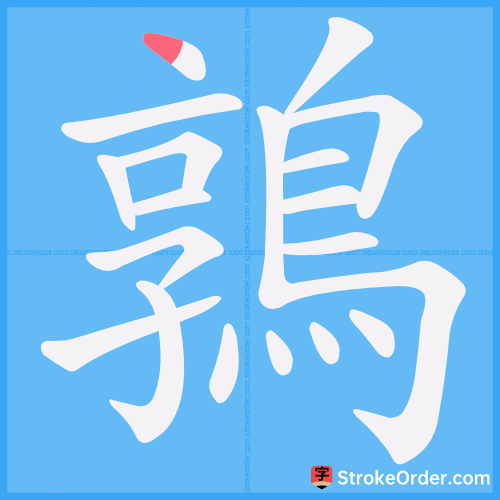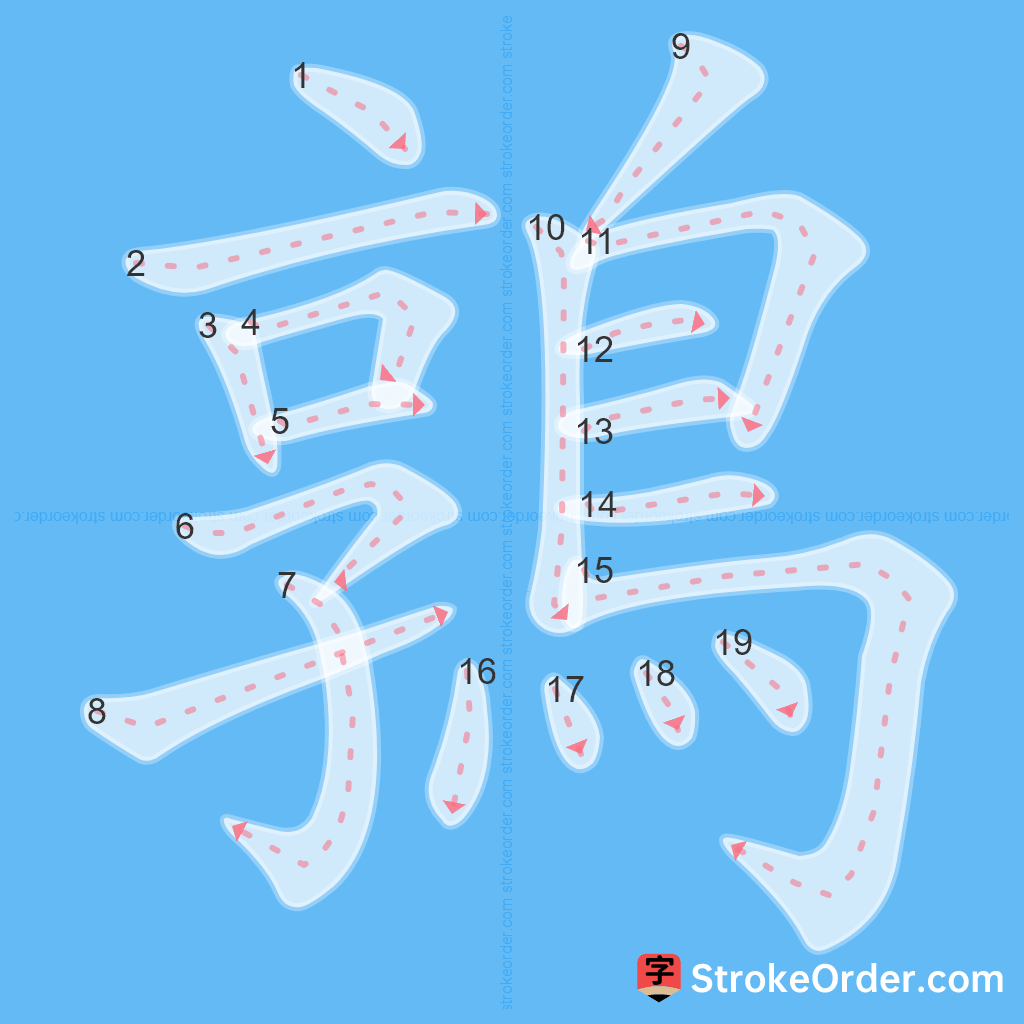鶉 Stroke Order
Animated Stroke Order of 鶉

Stroke Order Diagrams for 鶉

Step-by-Step Handwriting Guide for 鶉

Learn to Write Chinese Characters with Video Tutorials
Watch the video of writing the Chinese character "鶉", learn the correct stroke order (笔顺) of the character "鶉", and master the standard way of writing the character "鶉".
Free Printable Handwriting Practice with Stroke Order: 鶉
Printable Writing Practice Worksheet of "鶉" in Portrait Orientation (Tian Zi Ge)

Printable Writing Practice Worksheet of "鶉" in Landscape Orientation (Tian Zi Ge)

Information of 鶉
Pinyin
chún
Radical
鳥
Strokes
19 strokes
Usage
★★★
Definition
quail
鶉
1. Bird name. In ancient times, birds with unspotted feathers were called 鹌 (ān), and those with spots were called 鹑 (chún); later, they were commonly referred to as 鹌鹑 (ānchún). 《廣韻•諄韻》: "鶉, 䳺鶉也."
Meaning: Bird name. In ancient times, birds with unspotted feathers were called 'ān', and those with spots were called 'chún'; later, they were commonly referred to as 'ānchún'.
2. A legendary red phoenix. 《埤雅》 quoting 《禽經》: "青鳳謂之鶡, 赤鳳謂之鶉."
Meaning: A legendary red phoenix.
3. Name of a lunar mansion. A collective term for the seven constellations of the southern vermillion bird. 《左傳•僖公五年》: "鶉之賁賁, 天策淳淳."
Meaning: Name of a lunar mansion. A collective term for the seven constellations of the southern vermillion bird.
4. Abbreviation for 鹑衣 (chún yī). Metaphor for tattered clothing. 《荀子•大略》: "子夏家貧, 衣若縣鶉."
Meaning: Abbreviation for 'chún yī'. Metaphor for tattered clothing.
5. Homophone for 醇 (chún). Pure and beautiful. 《法言•寡見》: "春木之芚兮, 援我手之鶉兮."
Meaning: Homophone for 'chún'. Pure and beautiful.
6. Same as 鷻 (tuán). Refers to an eagle.
Meaning: Same as 'tuán'. Refers to an eagle.
7. Same as 鷻 (tuán). 《詩•小雅•四月》: "匪鶉匪鳶, 翰飛戾天."
Meaning: Same as 'tuán'.